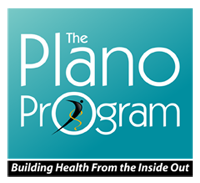The Caveman in You, Grains, and Evolution
Data indicates that 40,000 to 50,000 years ago, prehistoric men and women were tall, strapping athletes with defined muscles, fit, strong, and free of heart disease and obesity. Early Humans were hunters and gatherers who subsisted on a diet that was extremely high in animal and plant based foods sources. They consumed significant amounts of plant in the form of fruits, tubers, leafy vegetation, nuts and seeds. Interestingly, these hunter gatherer societies consumed what we now consider “unhealthy” amounts of dietary fats, these humans were lean and muscular free of plaques that lead to heart disease and stroke.
So what went wrong?
About 10,000 years ago, the pressures of increasing population density in many areas of civilization forced and abrupt shift from the nomadic, hunter-gatherer lifestyle to more geographically stable populations that depended on agriculture for survival. The advent of civilization brought about the domestication of livestock and introduction of dairy foods, as well as the cultivation of tubers, root vegetables, legumes, and cereal grains like rice oats, and wheat.
Got Grains??
After the advent of agriculture, and more specifically, the cultivation of grains, the humans lost a foot in height and experienced a significantly increased incidence of infections, anemia, bone disease, tooth defects, cavities, infant mortality, and a sizeable reduction in life span. This switch to a grain based diet caused the introduction of numerous food items for which our genetic predisposition was not prepared.
UNTIL TEN THOUSAND YEARS AGO-A MERE BLINK OF AN EYE COMPARED TO OUR GENETIC LIFESPAN-THE ENVIRONMENT THAT DICTATED OUR GENETIC MAKEUP DID NOT INCLUDE GRAINS.
As a result, we were never physiologically equipped to digest, absorb, and assimilate grains in a way that promotes a well balanced, strong healthy body.
Anthropologist believe that our hasty shift to a grain based diet, for which we were genetically ill prepared, lies at the root of many modern degenerative diseases.
Phytates are the salts of phytic acid. More correctly named inositol hexakisphosphate, the acid (or salt) is a phosphorus based compound found in the many grains.
There is sufficient evidence that this overreliance on grains and excessive phytate consumption, (especially the low quality grains that are grown in the Unites States) may lead to numerous, vitamin, mineral, and nutritional deficiencies.
Check out the Plano Program food guide pyramid, you will see that grains play a very small role in our nutrition program.
Gluten and Containing Grains:
Researchers now believe that as many as a third of us are probably gluten intolerant or gluten sensitive. The third of people who are reactive to gluten (I think the number is actually higher) evoke an inflammatory response that triggers the immune system. Over time, those who are known to be gluten intolerant can develop an array of medical conditions such as joint pain, skin conditions, acid reflux, autoimmiune disorders and celiac disease. Some people may experience some lower grade symptoms that linger before a bigger symptom may present. At the very least, it’s worth conducting a 30 day test to determine your sensitivity. It is more than likely those aches and pains, allergenic responses, and GI discomfort you have been plagued with might subside.
You will most likely never see cereal for breakfast on The Plano Program. We feel that most cereals are low quality, highly processed, fortified with synthetic vitamins and minerals, void of essential fats, and low in protein. Most common breakfast foods like cereals, bagels, French toast, Pancakes, and Scones provide very little nutrition and make it extremely difficult to regulate blood sugar and insulin. These foods will undoubtedly attribute to weight gain, poor energy, and ill health.
Lectins and Grains:
Lectins are involved in food allergies/sensitivities, inflammation and autoimmune disease, just to name a few. For instance, Lectins are linked to celiac disease. Even weight gain and low energy can be linked to Lectins.
Whole grains, peanuts, kidney beans, and soybeans are high in Lectins. Cow’s milk, nightshade vegetables (like potatoes and tomatoes) and some seafood also contain fairly high amounts of lectin.
In fact, estimates are that about 30% of our foods contain Lectins, and about 5% of the lectins we eat will enter our circulation.
Lectins are problematic because they are sticky molecules that can bind to the linings of human tissue, especially intestinal cells. In so doing, they disable cells in the GI tract, keeping them from repairing and rebuilding. Therefore, Lectins can contribute to eroding your intestinal barrier (leaky gut.
The Lectins in wheat for example, are specifically known to be involved in rheumatoid arthritis.
If you have any Lectin-related health issues like arthritis, allergies or autoimmune disease, our experience shows it is very helpful to reduce your intake of Lectins, especially from wheat. It’s also very important to balance immunity by working on stress management and gut health.
Cordain L et al. British Journal of Nutrition (2000), 83, 207–217.

